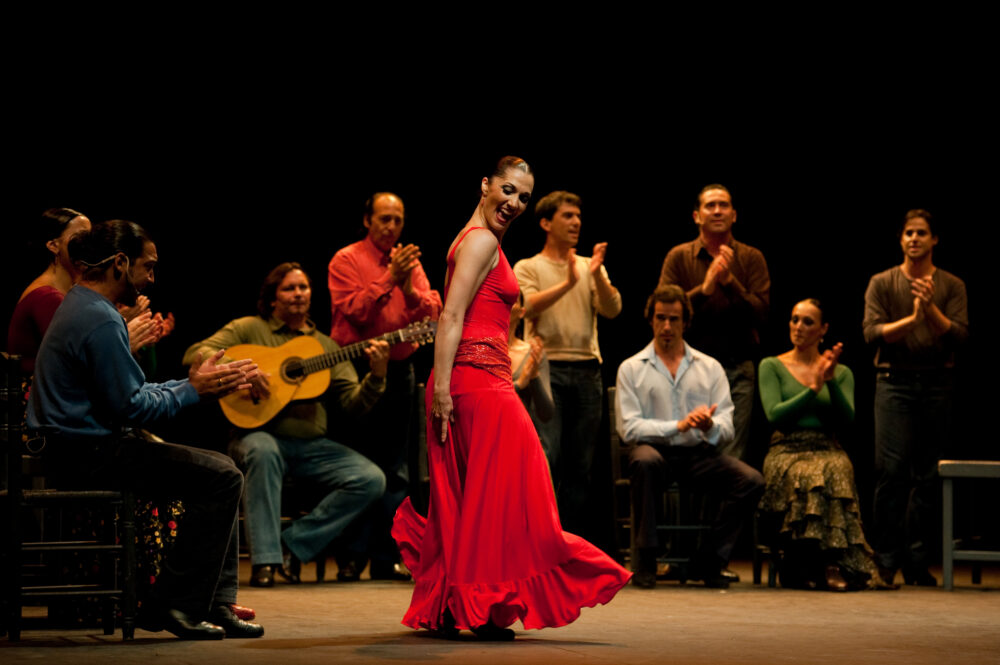Spanish Traditions
Flamenco and bullfighting are two of the best-known Spanish traditions. Nowadays, bullfighting is no longer so well thought of, it’s seen as an old-fashioned tradition, and the younger generations are not interested in it. Society these days is very aware of animal abuse and in Catalonia bullfights have been banned since 2012.
Flamenco is the most famous Spanish dance and music style. On November 16, 2010, Flamenco was listed as World Intangible Cultural Heritage by UNESCO.
Barcelona has a few places where you can watch Flamenco, known as Tablaos, and we have listed the most popular below.
The greatest Flamenco shows in Barcelona are:
-
Los Tarantos
-
El Tablao de Carmen
-
El Patio Andaluz
-
El Palacio del Flamenco
Sometimes visitors or locals say that Barcelona is not the right place to see a Flamenco show, because they say that “Flamenco is not from Catalonia, it comes from Andalusia.” But that’s not actually correct. It would be more accurate to simply say that nowadays there are more places to see live Flamenco shows in Andalusia than in Catalonia.
In this post, and after some research with experts in the origins of Flamenco, we would like to briefly explain how, when, and where Flamenco originated.

HISTORY OF FLAMENCO IN BARCELONA
Flamenco is closely related to gypsies, a people from INDIA who came to Europe in the middle of the 14th century and, due to their nomadic lifestyle, spread throughout the entire continent. Because of their skin color and society’s ignorance at that time, they were believed to be Egyptians. The word “gypsy” is an etymological evolution of the word “Egypt.” They arrived in Spain at the beginning of the 15th century in search of warmer climes than they had found elsewhere in Europe. Some arrived in the south of Spain (Andalusia) from the north of Africa while others came from France to northern Spain (Catalonia) and settled there.
Flamenco is actually a MIX of Moorish, Jewish, and Byzantine chants, Medieval Gregorian singing, and Spanish local folk music. Officially, the flamenco style originated during the second half of the 19th century in both the south and the north of Spain.
SO… IS FLAMENCO FROM ANDALUCIA?
In reality, the belief that Flamenco is Andalusian is not correct; the gypsies reached both the south and the north of Spain. They also arrived in Catalonia; therefore, Flamenco is also Catalan.
- At the end of the 19th century, there were more “tablaos” in Catalonia than in the rest of Spain.
- Also, some great composers, such as Enric Granados and Isaac Albeniz, were Catalan.
- The great dancer Carmen Amaya was Catalan, born in Barcelona.
AN INTERESTING FACT about the “Tablaos”
The TABLAOS are like small theaters specialized in Flamenco shows and offer a very intimate atmosphere. Curiously, the word tablao comes from tabla o tablón, meaning “wooden planks” in English. The stages are made out of tablas, as the planks are perfect for enjoying the tapping sound of the artist‘s shoes.
If you’d like to know more about this art and enjoy a live Flamenco show with professional artists at Barcelona’s oldest and most prestigious “tablao,” you can’t miss our “TAPAS AND FLAMENCO SHOW.” You will have a great, fun and truly authentic evening. We promise you won’t regret it!
